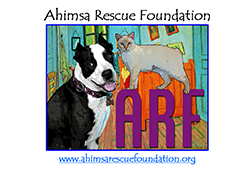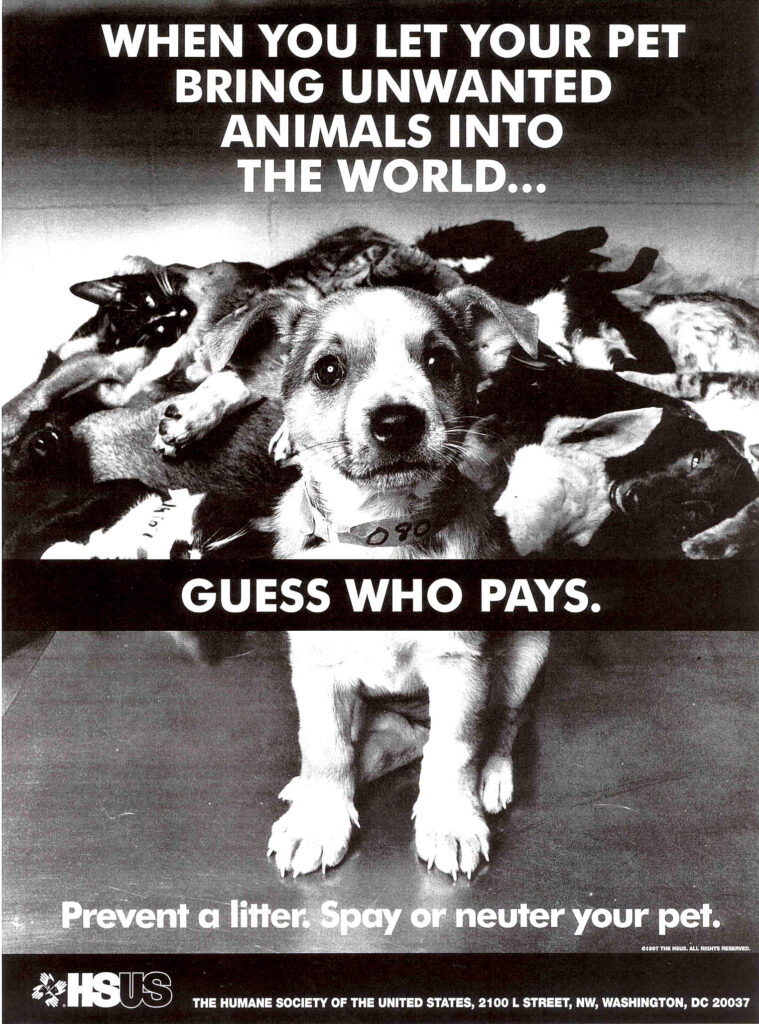The practice of early age spay/neuter, which was endorsed by the American Veterinary Medical Association (AVMA) in 2006, generally refers to dogs or cats which are at least two pounds and/ or two months of age at the time they are altered. These young animals recover from surgery more quickly than do older ones, they experience less blood loss and far fewer post operative complications than do adult animals and altering animals before the onset of breeding related behaviors (marking, etc), usually prevents these behaviors from starting (it’s easier to avoid problem behaviors than to cure them), a fact which helps the animal keep its home and keeps unwanted future litters from entering the shelter.’
The behaviors which are prevented by spaying or neutering the pet before the onset of sexual maturity include spraying and roaming in male cats, marking, roaming and fighting in male dogs and of course the problems associated with female cats and dogs when they go into “heat.” The problems associated with female dogs and cats going into heat range from annoying (vocalizing in cats or spotting blood in dogs) to dangerous (attracting male dogs resulting in fights), which is why many apartment and subsidized housing managers demand that pets be altered.
Organizations that focus on spay neuter often hear concerns about early age surgeries.
Some of the challenges to early age spay neuter are farfetched; and some were thought to be valid but have been proven false throughout years of research (such as urinary tract problems in male cats) and some may have validity relative to a particular animal or type of animal (giant breeds of dogs for example). However, in all cases, delaying the sterilization of dogs and cats as a matter of course, instead of due to a veterinarian’s decision regarding a single case, exposes many, many more animals to cancer, neglect and homelessness than any data can support. No documented problems make early age sterilization, or sterilization before the first heat cycle, ill advised, especially when contrasted with the significant dangers of mammary tumors, pyometra or the tragedy of homelessness. No pet should be adopted out without being altered first; sterilization contracts are difficult to enforce and unaltered animals are less likely to keep their homes than are altered animals due to the breeding related behaviors. Sadly, any shelter which releases intact dogs may be the single largest source of homeless dogs in the very community that they serve.
How young can my dog or cat get pregnant?
This question is especially important for those who share their lives with cats. Cats can actually become pregnant as young as four months of age, having a litter when they are six months old.
Many people believe that if their cat is kept indoors it’s not important for the cat to be spayed. However, cats which go into heat over and over display behaviors that express extreme frustration and which can lead to biting and destruction. Additionally, it takes only a momentary “accident” for a cat to become pregnant.
Cats are generally recognized as, ‘seasonally polyestrous,’ meaning that they come into a heat cycle again and again during certain times of the year. The term ‘seasonally’ refers to spring, summer and fall and cats are also ‘induced ovulators,’ all of this put together means that they continually go in and out of heat cycles throughout this time period (spring through fall) until they become pregnant. Other mammals go out of their estrus cycle when they ovulate, whether they’ve mated or not. This makes spaying your cat into an urgent matter, as they will either be chronically in heat or they will become pregnant; neither of these are an acceptable option for any cat. Also any accidental escape can result in a pregnancy, unlike a dog that must already be “in heat,” to be at risk of pregnancy when she gets loose.
The age at which dogs begin to come into estrus varies with size and breed, however many dogs can become pregnant at five months.
Delaying a spay for your cat or dog can be costly too. In addition to losing the benefits of preventing mammary tumors and behavior problems that come with spaying before the first estrus cycle, non-productive heat cycles are associated with pyometra, a serious type of uterine infection which can ultimately be fatal to both cats and dogs. Although if caught on time pyometra can usually be addressed by spaying the dog or cat, a pyometra makes the spay into a more involved surgery as the uterus can become friable (easily torn or ruptured resulting in hemorrhage) and the animal usually must remain on antibiotics afterward.
The number of unwanted litters which are born as a result of ‘spay delay’ are overwhelming testimony to the fact that incorporating the sterilization into the juvenile wellness healthcare protocol is vital and that the urgency of getting pets altered before the first heat cycle cannot be overstated.


